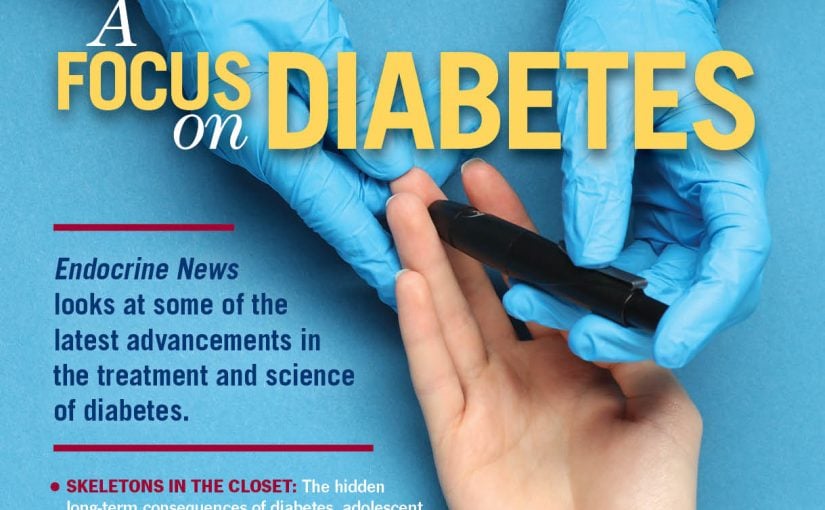
Andrea C. Gore, PhD, of the University of Texas in Austin, discusses her recent Journal of the Endocrine Society paper, which found that early-life exposure to a class of endocrine-disrupting chemicals called polychlorinated biphenyls – banned for decades but persistent in the environment — may lead to behavioral problems later in life.
Late last year, a paper appeared in the Journal of the Endocrine Society that once again implicated endocrine-disrupting chemicals (EDCs) perturbing the body’s hormones, but in a way that hasn’t really been examined until recently. EDCs have already been shown to contribute to endocrine diseases like cancer, reproductive disorders, and obesity, and now an animal model has shown that early-life exposure to certain EDCs may be linked to behavioral and psychological problems later in life.
Researchers led by Andrea Gore, PhD, professor of medicine and Vacek Distinguished University Chair in Pharmacology at the University of Texas in Austin point out that polychlorinated biphenyls (PCBs), a family of EDCs, have been banned for decades but were previously used in a variety of commercial and industrial applications and remain persistent in the environment. PCBs are found in contaminated soil, sediment, and certain types of fish due to environmental contamination. They have been linked to reproductive and anxiety disorders.
“Our laboratory and that of others have shown that developmental exposure to environmentally relevant levels of Aroclor 1221 (A1221), a mixture of PCBs known to have weakly estrogenic effects, has effects on gene and protein expression in the hypothalamus, reproductive senescence, neurogenesis, and a number of social and anxiety-like behaviors,” the study authors write.
The brain may not seem like the most obvious target for EDCs. “However,” Gore says, “hormone receptors, including estrogen, androgen, and thyroid hormone receptors, are abundantly expressed in the nervous system. These hormones play key roles in brain development, and disruptions of their actions by EDCs can perturb certain behaviors.”
The study authors write that emerging evidence has shown that males and females may have differences in vulnerability to the effects of EDC exposure, and that the influence of sex on brain development has long been recognized as a critical factor in understanding physiological and behavioral differences in the sexes.
“The hypothalamus plays a pivotal role in regulating the processes involved in reproductive success and maturation,” the authors write. “Investigating hypothalamic brain development and the unique susceptibility to EDC exposure between the sexes has implications for understanding the long-term consequences of environmental factors on sex-specific brain function and health.”
Specifics of the Species
For this study, Gore and her team gave pregnant rat dams a Nilla wafer treated with either PCBs or vehicle, with PCBs given at doses relevant to human exposure. The rat moms gave birth, and the researchers monitored growth and development of the pups, and measured serum hormones. Gore says that in prior studies, the research team did extensive behavioral characterization and showed that the offspring, as they grew into adulthood, differed in reproductive, social, and affective behaviors. Based on that work, the current study focused on cellular changes to parts of the hypothalamus that are implicated in regulating these behaviors, together with hormones.
“We found several significant effects of the PCB treatment,” Gore says. “Body weight of the pups was smaller during early life, although there was catch-up growth later. The largest effects were on serum hormones, especially at the youngest age measured (equivalent to childhood). In females, estradiol, LH, and FSH were significantly altered; in males, testosterone was almost completely suppressed. Although these hormone levels returned to normal by puberty, the exposure of the brain at this early life stage to aberrant hormone concentrations could permanently reprogram the neural development that is happening at that time.”

“PCBs in air can also enter the body through inhalation. I think of PCBs as the original ‘forever chemicals.’ We use that term now for perfluorinated compounds (PFAS), but PCBs were there first and we did not learn from those mistakes.” — Andrea Gore, PhD, professor of medicine and Vacek Distinguished University Chair in Pharmacology, University of Texas, Austin
The researchers conducted neuroanatomical analyses in the pubertal rats of hypothalamic neuropeptides involved in reproduction and energy balance — namely kisspeptin, neurokinin B, and prodynorphin, in two hypothalamic regions (arcuate nucleus (ARC) and AVPV). “We were surprised to find that kisspeptin and neurokinin B were unaffected in either sex, but that prodynorphin was selectively increased in the AVPV of the male rats. The physiological consequences of this finding are unknown, but we are pursuing that in current studies.”
One surprising finding from the study, the authors note, is that they were unable to detect prodynorphin co-expression with kisspeptin within KNDy neurons in rats, unlike mice, sheep, and primates. This co-expression has been reported in other species, underscoring an unexpected species difference in the anatomical distribution of prodynorphin in rats. “This insight helps further our understanding of the diversity and complexity of reproductive physiology across mammalian species, laying the groundwork for future investigations and advancements in reproductive health research,” the authors write.
“Any interpretation of data in animals needs to consider possible species differences when translating to humans,” Gore says.
Sex As a Biological Variable
The authors write in the conclusion that early developmental changes in hormones induced by A1221 observed here may affect brain organization and contribute to the changes in sexually dimorphic behaviors that are induced by exposure. “We reported that A1221 led to alterations in sociosexual and mate preference, and social and anxiety-like behaviors,” they write. “In addition, evidence of brain reorganization caused by early life PCBs is provided by reported changes in gene expression and neurogenesis in sexually differentiated brain regions such as the preoptic area and ventromedial nucleus.”
Gore goes on to tell Endocrine News that their results, as well as others’, indicate that biomedical research, especially on physiological endpoints such as the endocrine system, needs to include both female and male subjects, whether in animal or clinical studies. “The history of science has largely been based on work in males because females are considered more ‘complicated’ due to hormone fluctuations and therefore more difficult to study,” she says. “However, considering that half the population of humans is females, it’s essential to consider sex as a biological variable.”
“The history of science has largely been based on work in males because females are considered more ‘complicated’ due to hormone fluctuations and therefore more difficult to study. However, considering that half the population of humans is females, it’s essential to consider sex as a biological variable.” — Andrea Gore, PhD, professor of medicine and Vacek Distinguished University Chair in Pharmacology, University of Texas, Austin
In Gore’s lab, virtually all EDC research they have done reveals that males and females respond differently to these chemicals; some behaviors are more affected in females, others in males. The researchers’ gene expression work shows that different suites of genes in the sexes are reprogrammed by EDCs.
“The field of neuroendocrinology was one of the first to recognize the importance of developmental programming, and how early life hormones organize the brain in a manner that sets the stage for subsequent functional outcomes,” Gore says. “Natural gonadal hormones (estrogens and androgens) influence when neurons are born, and how they form synapses, and this differs quite profoundly between the sexes. When the brain is exposed to environmental EDCs, this can interfere with these developmental processes and have lifelong consequences, in a sex-specific manner.”
PCBs Are Forever
Industrial chemicals were designed to last, to be resistant to breakdown, which created a problem with their disposal. Gore says that it’s estimated that more than one million tons of PCBs were released into the environment, and they persist in soil, water, and air. PCBs in soil and water are taken up by plants and move up the food chain. “Organisms at the top of the food chain — such as humans — having the highest concentrations in their bodies due to biomagnification,” Gore says. “PCBs in air can also enter the body through inhalation.
“I think of PCBs as the original ‘forever chemicals,’” she continues. “We use that term now for perfluorinated compounds (PFAS), but PCBs were there first and we did not learn from those mistakes.”
Gore and her team used an experimental rat model to mimic the human situation of low-dose EDC exposure. She says that the expectation was that this early-life A1221 treatment would result in small but significant changes on individual endpoints, and the data from this study confirmed that prediction.
“It’s when you look at the body of data as a whole that things become really interesting,” Gore says. “Endocrine physiology requires the integration of multiple coordinated signals. If there are small changes to those signals induced by EDCs, the integration is disrupted. We referred to this in a previous JES paper as ‘dis-integration and reconstitution.’ The current study adds further evidence that these processes are being induced by early life EDCs.”
Bagley is the senior editor of Endocrine News. In the March issue he wrote about the continual evolution of treating obesity across the lifespan.

